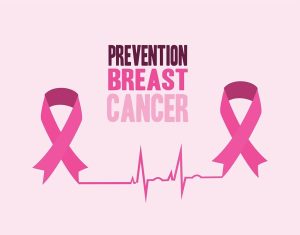According to the WHO, every minute, somewhere in the world, a woman dies from breast cancer. That is more than 1,400 women every day. Breast cancer is the most common cancer in women both in the developed and less developed world. It is estimated that worldwide over 508 000 women died in 2011 due to breast cancer (Global Health Estimates, WHO 2013). Although breast cancer is thought to be a disease of the developed world, almost 50% of breast cancer cases and 58% of deaths occur in less developed countries.
WHAT IS BREAST CANCER?
Breast cancer is a disease in which malignant (cancer) cells form in the tissues of the breast. It forms in either the lobules or the ducts of the breast. Lobules are the glands that produce milk, and ducts are the pathways that bring the milk from the glands to the nipple. Cancer can also occur in the fatty tissue or the fibrous connective tissue within the breast.
SIGNS AND SYMPTOMS
Symptoms for the most common breast cancers include; a breast lump, breast pain, red pitted skin over the entire breast, swelling in parts of the breast, a nipple discharge other than breast milk, unexplained change in the shape or size of the breast and a lump or swelling under the arm.
There are several types of breast cancer, and they are broken into two main categories: “invasive” and “noninvasive,” While invasive breast cancer is referred to as a breast cancer that has spread from the breast ducts or glands to other parts of the breast, noninvasive breast cancer is referred to as cancer that has not spread from the original tissue.
WHAT ARE THE RISKS OF FACTORS?
- Older age, especially 60 years or over
- Family history of breast cancer
- First menstrual period (menarche) before age 12
- Menopause at age 55 or over
- First childbirth after age 35
- No children
- Dense breasts
- History of benign breast disease
TIPS TO PREVENT BREAST CANCER
1. Self-Breast Examination and Screening: Studies have shown that breast cancer screening with mammography saves lives. it helps to find cancer early when it is most treatable. For most women, regular mammograms can begin at age 40, but specific recommendations vary by age and risk. Women should be familiar with their breasts and check with their health care provider right away if they notice any changes in how their breasts look or feel.
2. Breastfeed: Breastfeeding for a total of one year or more (combined for all children) lowers the risk of breast cancer. It also has great health benefits for the child.
3. Maintain a Healthy Weight and Be Physically Active: It is easy to take for granted because it is said too often, but maintaining a healthy weight is an important goal for everyone. Being overweight can increase the risk of many different cancers, including breast cancer, especially after menopause. Women who are physically active for at least 30 minutes a day have a lower risk of breast cancer. Regular exercise is also one of the best ways to help keep weight in check.
4. Eat Your Fruits and Vegetables: A healthy diet can help lower the risk of breast cancer. Try to eat a lot of fresh fruits and vegetables and reduce the intake of canned foods and fatty foods especially fried foods.
5. Avoid Too Much Alcohol and Smoking: Aside lowering the quality of life and increasing the risk of heart disease, stroke, and at least 15 cancers – including breast cancer – smoking also causes smelly breath, bad teeth, and wrinkles. While moderate drinking can be good for the heart in older adults, excess can increase the risk of breast cancer. If you drink too much alcohol, you should cut down or quit.
6. Avoid Birth Control Pills, Particularly After Age 35: Women taking birth control pills have a slightly increased risk of breast cancer. This risk goes away quickly, though, after stopping the pill. The risk of stroke and heart attack is also increased while on the pill – particularly if a woman smokes. Every woman should be concerned about breast cancer, avoiding birth control pills is one option to lower risk.
CAN MEN DEVELOP BREAST CANCER TOO? : During puberty, women begin developing more breast tissue while men do not. But because men are born with a small amount of breast tissue, they can develop breast cancer. Breast cancer first spreads to the lymph nodes in the armpit and then to other organs like lungs, liver, bone and brain. Less than 1 per cent breast cancers develop in men, and 1 in 1,000 men can develop breast cancer. It is usually detected as a lump below the nipple and areola. However, awareness among men about breast cancer is far less.







